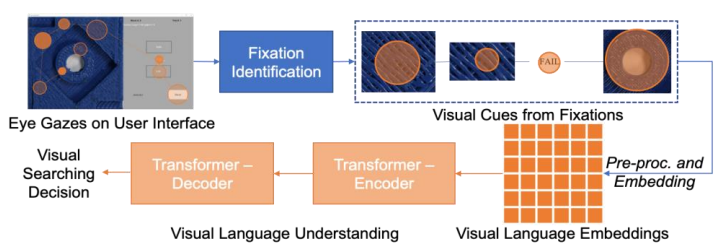THE CHALLENGE
A major challenge facing industries like advanced manufacturing and quality inspection is the gap between human expertise in visual search and the limited capabilities of current AI systems. While skilled inspectors can dynamically scan, interpret, and integrate subtle visual cues over time, most existing automated solutions rely on static models that struggle to generalize when data is limited or designs are complex. These systems often operate as "black boxes," offering little transparency into how decisions are made—an issue that hinders trust and limits their effectiveness in real-world scenarios. The business impact is significant: missed defects, reduced efficiency, and a reliance on manual oversight. To stay competitive, companies need intelligent solutions that not only automate inspection but also mimic human-like attention patterns, adapt to unique cases, and provide explainable, trustworthy results—bridging the gap between expert knowledge and scalable technology.
OUR SOLUTION
Our solution introduces a groundbreaking Visual Language Processing (VLP) framework that transforms eye-tracking data into actionable insights by mimicking how human experts visually inspect and make decisions. By converting eye fixations into structured “visual sentences” and analyzing them using a combination of convolutional neural networks (CNNs) and Transformer-based encoder-decoder models, the system can intelligently prioritize visual cues based on their relevance—just like a trained inspector would. A unique “attention-on-attention” mechanism adds an extra layer of transparency by revealing which visual elements most influenced the decision-making process. For businesses, this means smarter, more interpretable automation in areas like quality inspection, where traditional AI often falls short. The result is reduced error rates, faster inspections, and better alignment between human expertise and AI performance—empowering organizations to scale expert-level insights without sacrificing trust or accuracy.

Figure: Overview of the VLP modeling framework.
Advantages:
- Targeted immune cell therapy with enhanced specificity
- Reduced systemic side effects compared to conventional anti-inflammatory drugs
- Scalable and precise cell isolation and reprogramming methods
- Broad therapeutic potential across cardiovascular and chronic inflammatory diseases
Potential Application:
- Manufacturing quality inspection
- UI/UX usability testing
- AR/VR attention analytics
- Online consumer behavior analysis